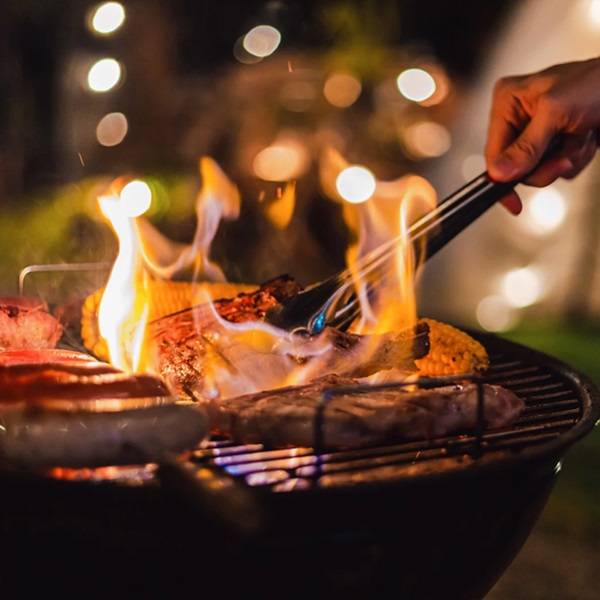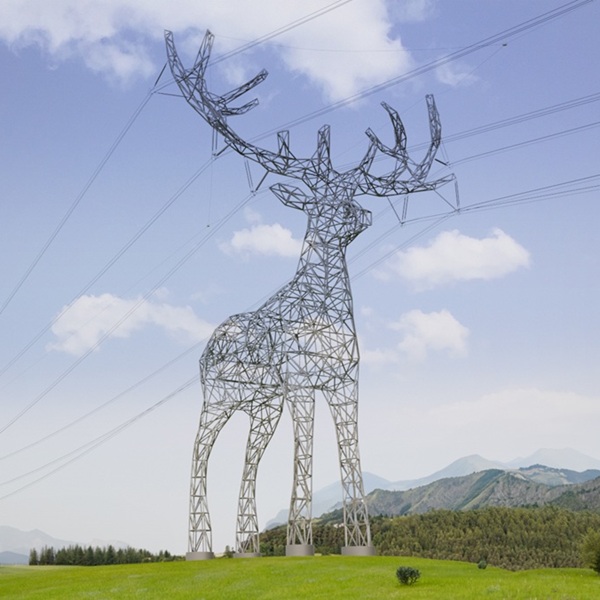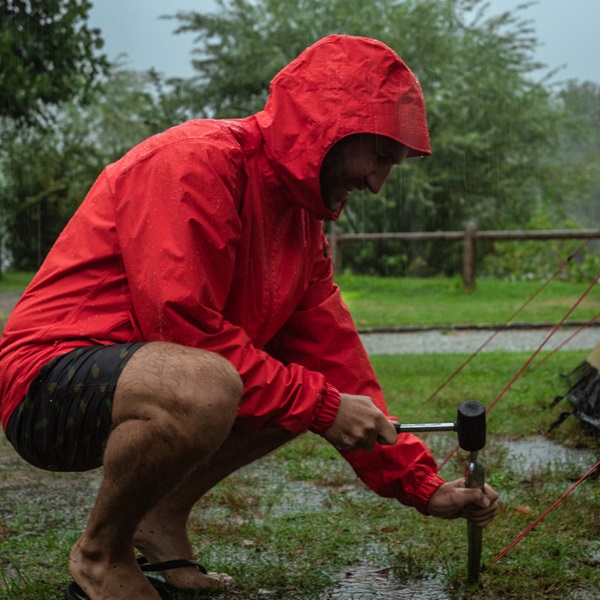
Camping can be anywhere. You can go camping in the forest, on the beach, or in the rocky mountains. Mountain camping offers a thrilling escape into nature. It invites adventurers to explore rugged landscapes and tranquil peaks.
For beginners, it is essential to understand the different styles of camping before setting out. For example, car camping allows easy access and more gear, while backpacking demands minimalism and stamina. The reason why you should understand the differences is because of specific preparation. Because choosing the right approach ensures safety, comfort, and enjoyment.
In this guide, we will help you understand the philosophy of mountain camping and its requirements. If you are ready, let us start!

Must-Have Mountain Camping Gear List
Having the right gear is essential for both safety and comfort when venturing into the mountains. Unlike regular camping, mountain camping often involves unpredictable weather, steep terrain, and limited access to resources. Therefore, you should pack smart and prepare yourself for sudden temperature drops, rough trails, and high altitudes.
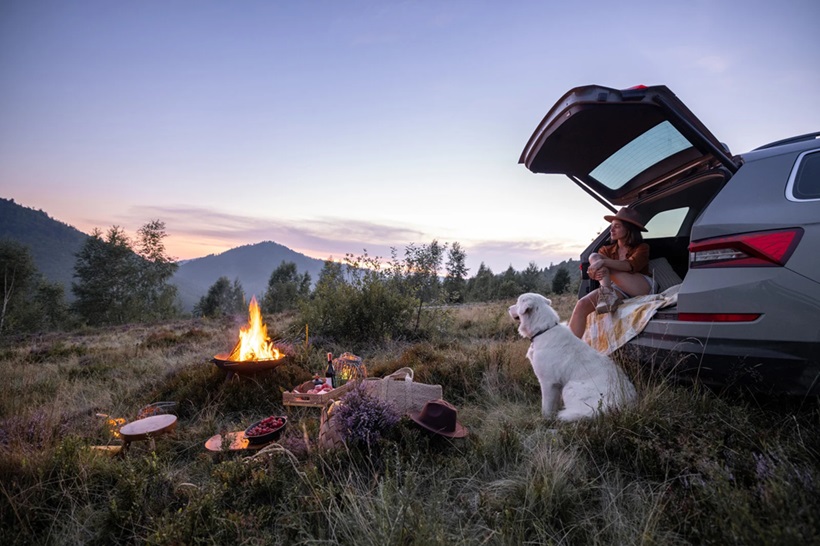
Essential hill camping gear checklist:
- Backpack
- Tent
- Sleeping bag
- Sleeping pad
- Hiking boots
- Layered clothing
- Headlamp or flashlight
- Portable stove and fuel
- Cookware
- Water filtration system
- High-calorie meals and snacks,
- First aid kit
- Navigation tools
- Multi-tool or knife
- Emergency shelter or blanket
- Trekking poles
- Sunscreen and glasses
- Trash bag
Mountain Camping Tips for Beginners
Are you new to mountain camping? Ok then. Camping in the mountains requires preparation, which is the key to a safe and enjoyable experience. Because if you are not prepared enough, your dream can become a real-life nightmare.
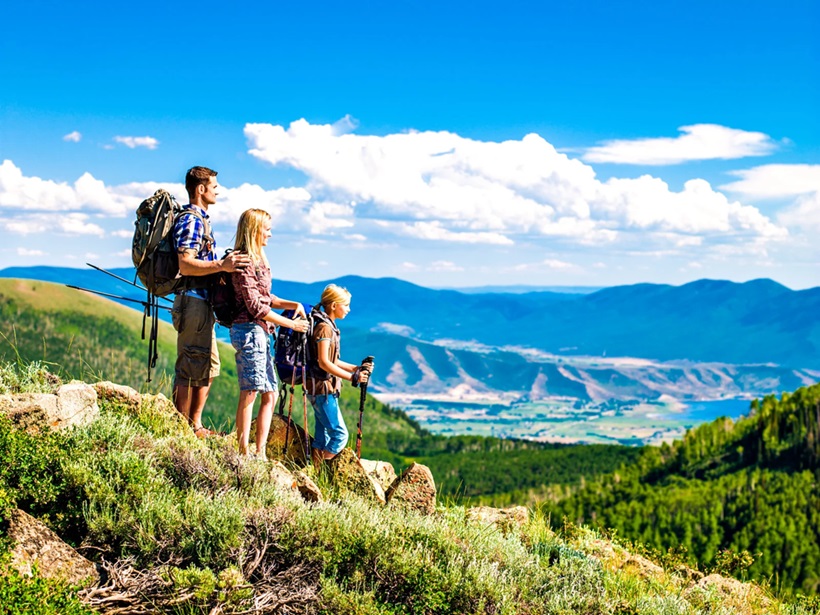
Stay Organized with a Personalized Camping Checklist
One of the most effective ways to prepare for mountain camping is to create a personalized checklist. As you pack, a checklist ensures nothing important is forgotten—especially small yet vital items like a headlamp, matches, or water filter.
You should customize your list based on the location, weather forecast, and trip length. For example, you can include gear, clothing layers, food, and first aid supplies. In addition, mountain conditions are unpredictable, so double-check everything before departure.
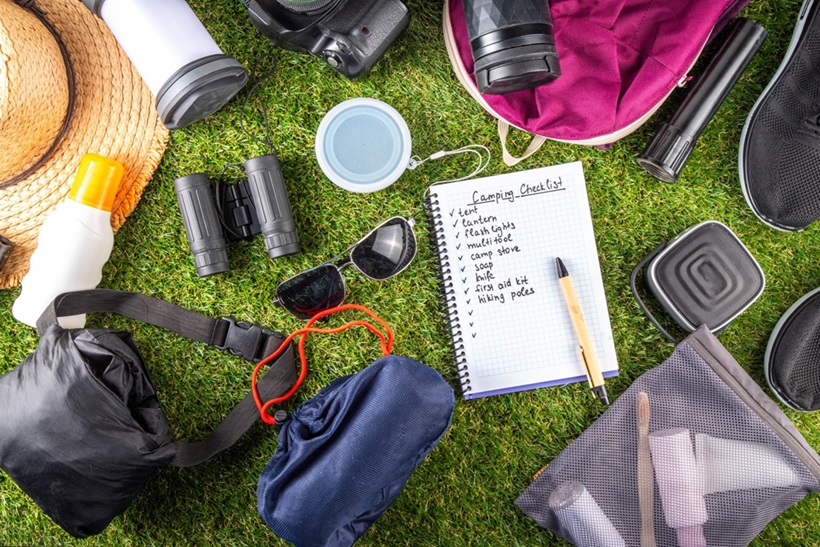
Pick the Perfect Campsite Through Smart Research
Not all mountain campsites are created equal, especially for beginners. Before heading out, you should research potential camping spots using trail guides, apps, and online reviews. Additionally, you can look for sites that are accessible, have flat ground, and are close to water sources.
Make sure to check if a permit is required or if certain areas are off-limits. Consider distance from trailheads and difficulty level.

Locate Reliable Water Sources in Advance
Clean drinking water is a must when mountain camping. While streams and lakes may seem plentiful, they aren’t always safe or accessible. Before your camp on top of the mountains, identify potential water sources near your campsite and verify whether they are reliable year-round. Always carry a water filtration system or purification tablets to treat any collected water. Dehydration at high altitudes happens faster than expected, and carrying enough water is often not feasible.

Think Before Your Wild Camp
Wild camping—setting up outside of established campgrounds—can be a rewarding way to connect with nature, but it also requires extra caution. Beginners should research local regulations, as wild camping is restricted in some mountain regions.
Additionally, you should practice Leave No Trace principles:
- Stay 200 feet from water sources.
- Use established fire rings if allowed.
- Pack out all waste.
While wild camping offers solitude and freedom, it also means no facilities or marked trails. Consider your experience level before venturing off-grid. If you’re new to mountain camping, it might be better to start in designated campgrounds before going fully remote.

Monitor Mountain Weather Closely
Mountain weather can shift dramatically within minutes, making it crucial to stay informed before and during your trip. You should check the forecast for the area you’ll be camping in and look for updates as you go. In addition, pack gear that can handle sudden rain, snow, or high winds, even if conditions seem mild at first. You should bring waterproof layers, a four-season tent, and extra insulation. Learn to recognize early signs of storms like fast-moving clouds or temperature drops. Staying weather-aware isn’t just a tip—it’s a safety requirement.
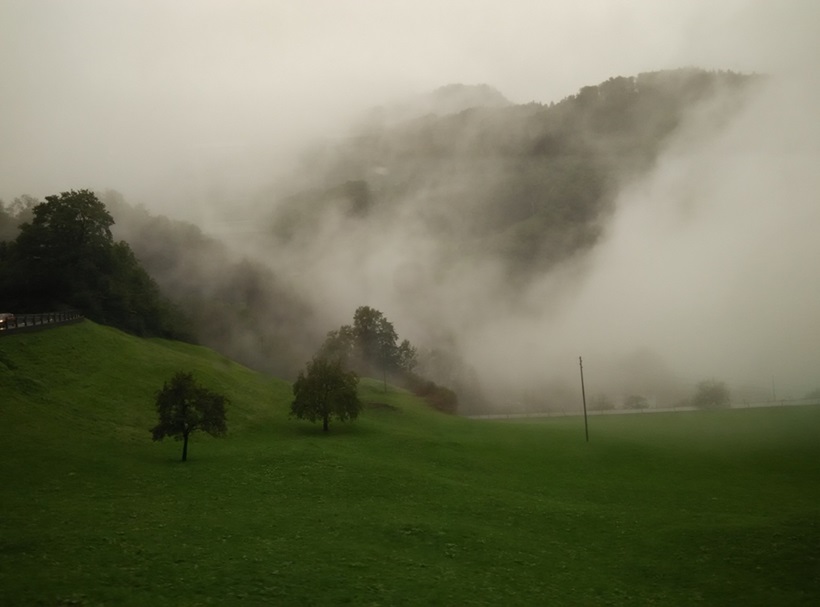
Bring High-Energy Snacks and Extra Water
Mountain hiking and camping burn more calories than you might expect, especially with the added effort of high elevation. Therefore, pack a variety of high-energy snacks such as trail mix, protein bars, and dried fruits. You should also plan your meals to include lightweight but nutritious options that require minimal cooking. Don’t forget to bring more water than you think you’ll need or at least a reliable purification method. Staying fueled and hydrated keeps your energy levels high and your focus sharp.

Have a Solid Backup Plan
Even the best-planned mountain camping trips can take an unexpected turn due to weather, trail closures, or injury. Always have a backup plan ready. Research alternate campsites, emergency exits, and the nearest ranger stations or towns. Share your itinerary and emergency contacts with a friend or family member. Carry a map and compass in case GPS fails. Consider downloading offline maps. Having a plan B (and even a plan C) isn’t over-preparing—it’s being smart.
Invest in Durable, High-Quality Gear
Quality gear is a game-changer when mountain camping. Cheap tents, flimsy backpacks, and thin sleeping bags can quickly fail in harsh conditions. Thus, you should invest in equipment that’s tested for rugged use and variable weather. You can look for tents that are water- and wind-resistant, sleeping bags rated for low temperatures, and backpacks with supportive frames. Durable gear not only lasts longer but also improves comfort and safety. Remember, your equipment is your lifeline in the mountains—especially when help is far away.
Prepare for Sudden Temperature Shifts
Mountains are notorious for their unpredictable temperature swings. It may be warm during the day and freezing at night. Beginners often make the mistake of underpacking, leading to uncomfortable or even dangerous conditions. Bring layered clothing made from moisture-wicking and insulating materials. Avoid cotton, which traps moisture and can cause chills. Don’t forget gloves, a hat, and thermal socks. Choose a sleeping bag with a lower temperature rating than expected.
Properly Fit and Adjust Your Backpack
A poorly adjusted backpack can ruin even the most beautiful hike. When packing for mountain camping, take the time to fit your backpack correctly. Adjust the shoulder straps, hip belt, and load lifters so the weight sits comfortably on your hips—not your shoulders. Distribute heavy items close to your back and center of gravity. Practice walking with your loaded pack before your trip. A properly fitted backpack improves balance, reduces fatigue, and prevents strain on your neck and back.




